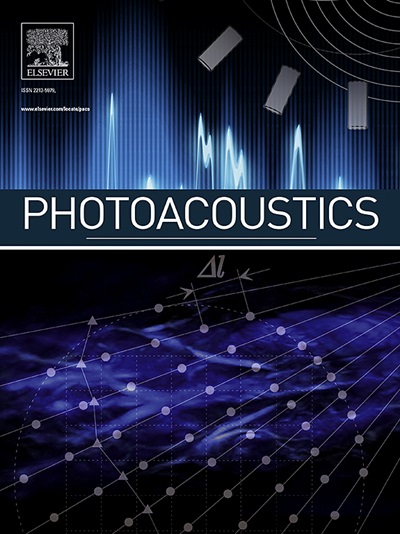A light-induced thermoelastic spectroscopy using surface mounted device quartz tuning fork
IF 7.1
1区 医学
Q1 ENGINEERING, BIOMEDICAL
引用次数: 0
Abstract
This paper reported on a system for the detection of trace acetylene (C2H2) gas utilizing a surface mounted device quartz tuning fork (SMD QTF) in conjunction with light-induced thermoelastic spectroscopy (LITES) and provided a comparative analysis against a conventional plug-in quartz tuning fork (P-QTF). The SMD QTF is a cost-effective standard instrument featuring a transparent glass shell and smaller size, which eliminates the need for stripping shell in LITES and effectively mitigates oxidation of the QTF as well as drift in resonance frequency. The SMD QTF has almost 2–4 times more Q factor than the conventional bare P-QTF. Experiments demonstrated that the signal amplitude of the SMD-QTF was almost 9 times higher than that of the conventional bare P-QTF. Minimum detection limits (MDLs) of 68.11 ppb@220 s (P-QTF) and 40.39 ppb@200 s (Larger SMD QTF) were obtained for both under the same experimental conditions.
求助全文
约1分钟内获得全文
求助全文
来源期刊

Photoacoustics
Physics and Astronomy-Atomic and Molecular Physics, and Optics
CiteScore
11.40
自引率
16.50%
发文量
96
审稿时长
53 days
期刊介绍:
The open access Photoacoustics journal (PACS) aims to publish original research and review contributions in the field of photoacoustics-optoacoustics-thermoacoustics. This field utilizes acoustical and ultrasonic phenomena excited by electromagnetic radiation for the detection, visualization, and characterization of various materials and biological tissues, including living organisms.
Recent advancements in laser technologies, ultrasound detection approaches, inverse theory, and fast reconstruction algorithms have greatly supported the rapid progress in this field. The unique contrast provided by molecular absorption in photoacoustic-optoacoustic-thermoacoustic methods has allowed for addressing unmet biological and medical needs such as pre-clinical research, clinical imaging of vasculature, tissue and disease physiology, drug efficacy, surgery guidance, and therapy monitoring.
Applications of this field encompass a wide range of medical imaging and sensing applications, including cancer, vascular diseases, brain neurophysiology, ophthalmology, and diabetes. Moreover, photoacoustics-optoacoustics-thermoacoustics is a multidisciplinary field, with contributions from chemistry and nanotechnology, where novel materials such as biodegradable nanoparticles, organic dyes, targeted agents, theranostic probes, and genetically expressed markers are being actively developed.
These advanced materials have significantly improved the signal-to-noise ratio and tissue contrast in photoacoustic methods.
 求助内容:
求助内容: 应助结果提醒方式:
应助结果提醒方式:


